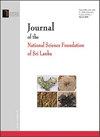多环芳烃与食品安全:综述
IF 0.4
4区 综合性期刊
Q4 MULTIDISCIPLINARY SCIENCES
Journal of the National Science Foundation of Sri Lanka
Pub Date : 2023-06-30
DOI:10.4038/jnsfsr.v51i2.11396
引用次数: 1
摘要
多环芳烃(PAHs)是岩石成因或热成因。在已知的几百种多环芳烃中,有16种是有毒的,其中8种是致畸的。8种中有4种是致癌物。其中,苯并[a]芘(BaP)致癌性最高,在毒性研究中被用作标记物。岩石成因的多环芳烃污染土壤、水和空气。它们可能出现在与尘埃颗粒有关的空气中。多环芳烃是在燃烧木材和其他有机物时产生的。它们也在食物加热过程中由脂质和碳水化合物产生。多环芳烃主要与烧烤、烟熏、油炸、烘烤和烘烤食物有关。在这些食物中,多环芳烃的形成主要与鱼和肉的烧烤有关,其中滴下的油脂和明火之间发生接触。产生的多环芳烃会沉积在鱼和肉的肌肉上。烟雾中的多环芳烃在暴露于受污染的空气中以及食品的熏制过程中沉积在食品表面。多环芳烃是在食用油机械排出过程中形成的。本文讨论了标记物、致癌性多环芳烃和总多环芳烃在不同食品中的存在及其形成和沉积的程度,以及与食品安全危害和健康影响的关系。在当地食品和食品制备习惯中,综述了椰子油的作用,食品的熏制以及即使在温和的热条件下如红茶的制造中也会产生多环芳烃。提出了未来行动、研究和实施食品法规的建议,以尽量减少食品中的多环芳烃。本文章由计算机程序翻译,如有差异,请以英文原文为准。
Polycyclic aromatic hydrocarbons and food safety: A review
Polycyclic aromatic hydrocarbons (PAHs) are of petrogenic or pyrogenic origin. Of the known few hundred PAHs, 16 are identified to be toxic, of which 8 are teratogenic. Of the 8, 4 are carcinogens. Among them, Benzo[a]pyrene (BaP) possesses the highest carcinogenicity and is used as a marker in toxicity studies. PAHs of petrogenic origin contaminate soil, water and air. They may occur in air associated with dust particles. PAHs of pyrogenic origin are generated during burning of wood and other organic matter. They are also produced from lipids and carbohydrates during heating of foods. PAHs are mostly identified with grilling, smoking, frying, roasting and toasting of foods. Among the foods, formation of PAHs is studied mostly in association with grilling of fish and meat, where contacts occur between the dripping lipids and naked flames. The generated PAHs get deposited back on fish and meat muscles. PAHs in smoke are deposited on food surfaces on exposure to contaminated air from the vehicle fumes and smoke curing of foods. PAHs are formed during mechanical expulsion of edible oils. Presence of markers, carcinogenic PAHs and total PAHs in different foods and their extent of formation and deposition is discussed in relation to food safety hazards and health implications. Among the local foods and food preparation habits, the role of coconut oil, smoke curing of foods and formation of PAHs even under mild conditions of heat such as manufacture of black tea are reviewed. Recommendations for future actions, research and implementing food regulations to minimize PAHs in foods are presented.
求助全文
通过发布文献求助,成功后即可免费获取论文全文。
去求助
来源期刊

Journal of the National Science Foundation of Sri Lanka
MULTIDISCIPLINARY SCIENCES-
CiteScore
0.90
自引率
0.00%
发文量
57
审稿时长
>12 weeks
期刊介绍:
The Journal of National Science Foundation of Sri Lanka (JNSF) publishes the results of research in Science and Technology. The journal is released four times a year, in March, June, September and December. This journal contains Research Articles, Reviews, Research Communications and Correspondences.
Manuscripts submitted to the journal are accepted on the understanding that they will be reviewed prior to acceptance and that they have not been submitted for publication elsewhere.
 求助内容:
求助内容: 应助结果提醒方式:
应助结果提醒方式:


